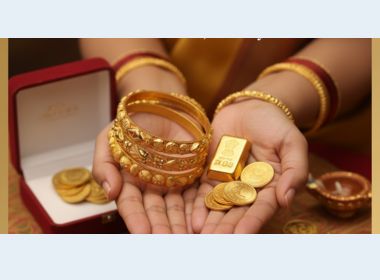Search Suggestions
- Gold Loan
- Money Transfer
- Mutual Funds

Understanding Different Types of Gold Carats in India
Gold has symbolised wealth for as long as anybody can remember. Especially in India, where it is common to gift valuables to your loved ones and sometimes even yourself on auspicious occasions, gold is a revered choice. Whether in the form of a statement heirloom piece or as coins or bricks, gold not only stands as a hedge against inflation and has excellent global value but holds a lot of sentimental value as well.
When it comes to buying gold, people find that there is a lot of diversity and gold comes in different forms, purity and value. Many of you may also have heard the terms 18 carats gold, 24 carat gold rate today or 22 parts gold being tossed around. While an expert or experienced investor will easily understand these clergyman terms, especially carat value, many may still be in the dark.
Get the Best Gold Loan Today
What is Carat?
The term Carat or Karat is the measure of the purity of a precious metal. Though in many countries Carat describes the weight of a gemstone or diamond, and Karat is the unit of measure for purity of gold, in India, the term is used interchangeably.
Gold is a very soft and highly malleable metal in its purest form. This pliability, though makes it easy to mold it into any shape, however, gold does not retain the shape for long. Therefore, it needs to be alloyed with other metals such as copper, silver, zinc, or brass to provide it with the required strength and durability. The amount of gold in relation to the other metals mixed is then expressed in carats. It is the measure of fineness/ purity for the parts of gold in jewellery, ornament, coin or brick and is represented through numbers, typically 24, 22, 18,14, and 10. The higher the number/ carat, the purer the gold.
In India, a 24-carat is considered the purest form, containing 99.9% gold. However, it is also the most expensive and not feasible for jewellery due to high malleability. If you are unsure whether you should buy 24-carat gold online or an 18-carat gold ornament, read on to learn more about the different types and their characteristics.
Different Types of Gold Carat in India
24-Carat
24-carat gold is the purest form of gold and contains few to no non-gold parts. It is also considered the standard measure of purity and the value of other gold is calculated by the percentage out of 24 (for example, 24 parts out of 24 parts are pure gold). Moreover, since it is unadulterated, it possesses a vibrant, rich yellow hue to it. 24-carat gold holds the highest value for its purity and is primarily used for investment purposes, therefore the price of this gold is also typically higher than others. As the gold rates fluctuate daily, investors can consider checking the “2 gram 24 carat gold price” or “24-carat gold rate today” before investing.
22-Carat
22-carat gold contained 2 parts alloy out of 24 parts gold. It is the next best quality after 24-carat and is widely preferred for making long-lasting gold ornaments and gold articles. 22-carat gold is also called 916 gold as it contains about 91.6% pure gold and strikes a balance between high gold content and durability. Due to these characteristics and its popularity, 22-carat gold jewellery holds a significant demand, therefore, keeping an eye out on the 22-carat gold rate today is important.
Suggested Read: DIFFERENCE BETWEEN 22K AND 24K GOLD
18-Carat
18-carat gold contains about 75% pure gold alloyed with 25% other metals and strikes the perfect balance between purity and durability. Compared to higher carats, 18-carat gold is more resistant and durable and is often used for making intricate designs, and studded jewellery. Furthermore, in contrast to higher caratages, 18-carat gold is much more affordable, and by monitoring today’s market rate of 1 or 10-gram gold online, individuals can make sure they are not overpaying or underselling gold.
14-Carat
14-carat gold is alloyed with a higher percentage of non-gold metals including silver, copper, nickel, zinc etc. Because of the metals, 14-carat gold is less prone to bending, denting or scratches and is the preferred choice for small pieces, like wedding bands, and other everyday jewellery items.
10-Carat
10-carat gold is counted among the least pure form of gold as the amount of alloy elements is largely higher than that of gold, i.e., 58.3%. This type of gold is more vulnerable to tarnish because of the alloy present. It is also the most inexpensive type and is used in simple items such as bracelets, chains, rings etc.
Did You Know?
While gold is precious, its purity and credibility are important factors you should consider. And this credibility, purity, quality and price of the gold is determined by Hallmark.
Hallmarking is the process of verification and stamping the gold that indicates its worthiness and purity, for example, a 22-carat gold jewellery will have a hallmark “916” embossed inconspicuously to it. Hallmarking is affixed by the Bureau of Indian Standards (BIS) and ensures gold authenticity. A hallmark also provides buyers and sellers assurance as to the purity of gold and helps prevent fraud.
Besides that, hallmarked gold can also be traded at a high value and is considered a valuable asset as loan collateral.
Choosing the Right Carats for Your Needs
Each type of gold has its unique properties and uses. However, depending on certain factors such as: –
Get the Best Gold Loan Today
- Your budget
- Personal preference
- Frequency of wear
- Quality
- Investment considerations
Investing in gold is a significant financial decision. But by making an informed decision after securing proper knowledge about carat value, purity and hallmark, individuals are on the path towards a sound financial future. While caratages like 18, 22 and 24 are favoured by buyers, banks and NBFCs for their high value, gold jewellery with lower carats is also suitable for everyday wear and investment.
- Avail gold loan
- Calculate Gold Loan
- Check Gold rate today
- Gold Loan Eligibility
- Interest Rate
- Gold Loan Scheme
- Custom Offers
CATEGORIES
OUR SERVICES
-

Credit Score
-

Gold Loan
-

Personal Loan
-

Cibil Score
-

Vehicle Loan
-

Small Business Loan
-

Money Transfer
-

Insurance
-

Mutual Funds
-

SME Loan
-

Corporate Loan
-

NCD
-

PAN Card
-

NPS
-

Custom Offers
-

Digital & Cashless
-

Milligram Rewards
-

Bank Mapping
-

Housing Finance
-

#Big Business Loan
-

#Gold Loan Mela
-

#Kholiye Khushiyon Ki Tijori
-

#Gold Loan At Home
-

#Sunherisoch
RECENT POSTS

Why Are Gold Loans the Best Option When Banks Reject Your Personal Loan?
Know More
Struggling with low CIBIL? Here’s How a Gold Loan Can Still Get You Funded
Know More
What is a Top-Up Loan? Eligibility Criteria Explained
Know More
Top Factors That Influence Mortgage Loan Interest Rates
Know More
What is a Loan Against Mutual Funds and How Does it Work?
Know More
What is Working Capital? Meaning, Formula & Importance
Know More
Understanding KDM Gold and Why it’s Banned
Know More
Gold loan boom: 3,000 new branches to open in India in 12 months
Know More
Gold Loan Boom: Rs 14.5 lakh crore market spurs NBFCs to add 3,000 branches
Know More
How BNPL Affects Your Credit Score
Know MoreFIN SHORTS

What Are Co-Pay and Deductibles in Insurance Policies?
Know More
Should You Take a Loan Against Your Mutual Fund or SIP?
Know More
Top 5 Best Mid-Cap Mutual Funds to Watch in 2026
Know More
Are Personal Loans Right for Retirees? Key Points to Consider
Know More
What Happens to a Personal Loan After the Borrower Dies?
Know More
Best Loan Choices for Credit Scores of 580 and Below
Know More
7 Reasons Why a Gold Loan Is the Best Option for Small Businesses
Know More
10 Reasons Why People in India Prefer Physical Gold
Know More
Real Estate vs Gold: Which Is a Better Investment in India?
Know More
10 Common Mistakes That Make Investors Lose Money in Mutual Funds
Know More
10 Reasons Why Gold Has So Much Appeal in Uncertain Times
Know More
7 Ways Settling Debt Can Impact Your CIBIL Score
Know More- South +91 99469 01212
- North 1800 313 1212


